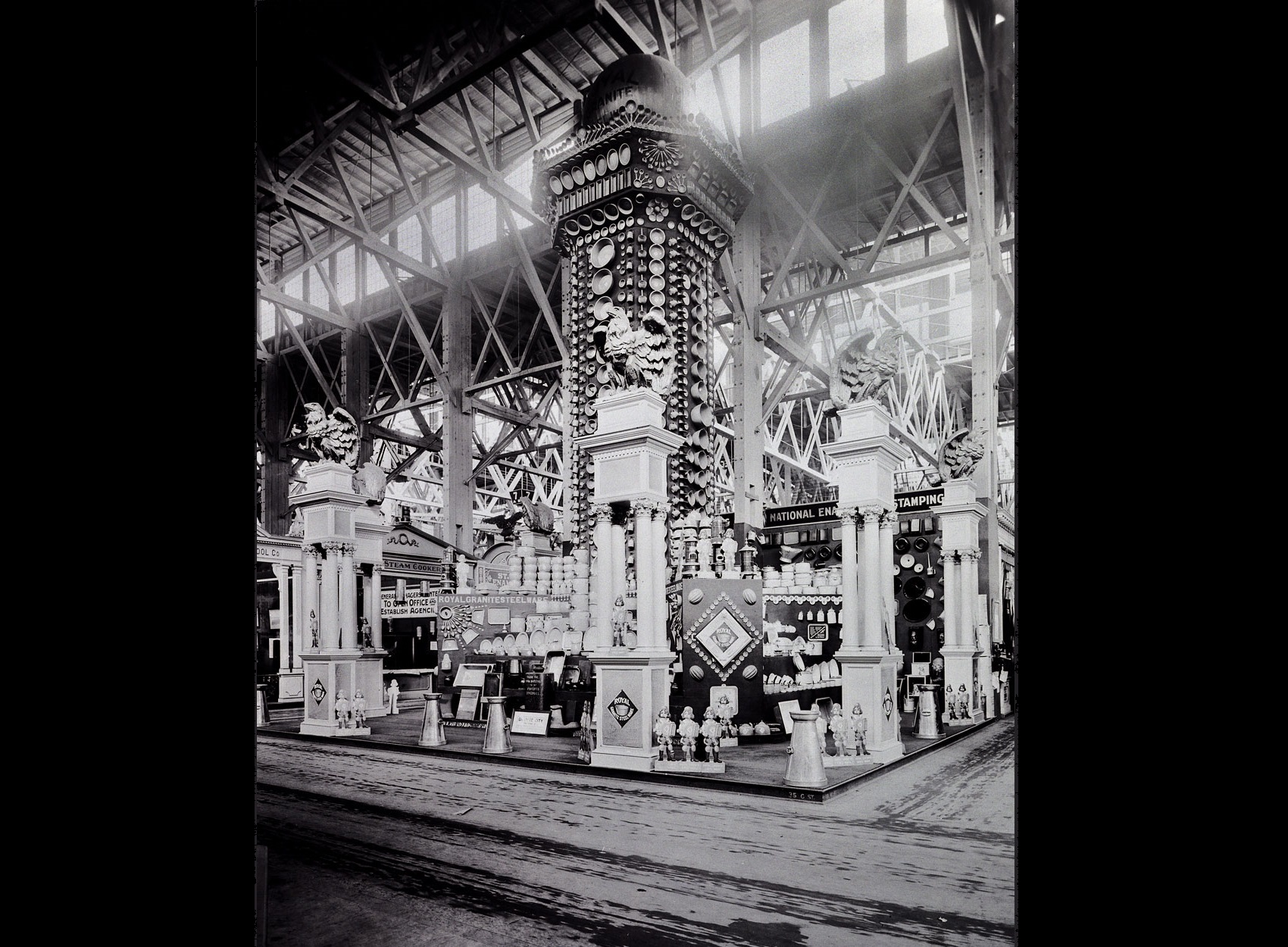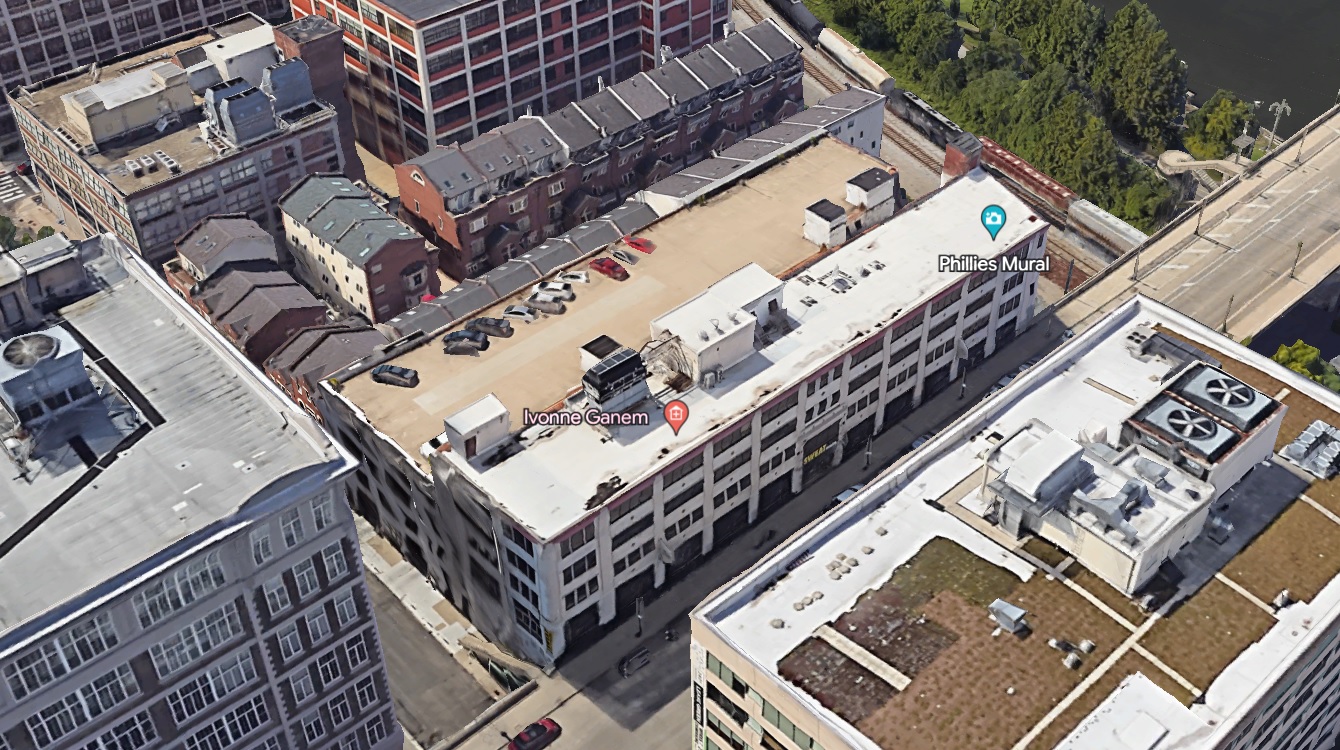Standing at the corner of 24th & Walnut for 107 years, the bridge-facing building at 200 S. 24th St. often goes unnoticed, compared to its taller and more prominent neighbors. While looking fairly ordinary at first glance, this little riverfront building has many stories to tell.



The National Enameling and Stamping Company, known as NESCO, was formed in 1899 as a compromise between the Saint Louis Stamping Company and three other concerns that manufactured and sold granite-enameled metal household wares of different varieties. The four companies were accusing each other of stealing each others’ patented techniques, resulting in this compromise entity. Soon to be known as Nescoware, the household enameled metal products manufactured by NESCO became massively popular all around the country.

While the company and its predecessors had offices and sales operations in Philadelphia for decades, the explosion of the popularity of Nescoware lead to the requirement for a large new warehouse to store all the NESCO products being sold around the Philadelphia region. Developer Joseph J. Greenberg acquired an old stone yard under the Walnut Street bridge and signed a lease with NESCO for a new, purpose-built warehouse for their needs. The new warehouse would have a reinforced concrete frame, floors, and roof, with brick curtain walls. The 6-story, 75-foot-tall building would appear much shorter from Walnut Street, where its 3rd floor opened out to the Walnut Street Bridge. The facility was completed in 1915, a year after its neighbor on 24th street, the Charles E. Hires Root Beer Bottling Plant, also built by Greenberg, that shared the same freight railroad siding.
In the 1920s, NESCO miscalculated their success. World War I had been very profitable for the company, not only because they were producing steel and enameled products for the war effort, but because the war cut out their foreign competition. They massively expanded their operations, especially their steel manufacturing. After the war though, sales and popularity of enameled metal household wares declined.
Though NESCO lasted into the 1950s, they abandoned the 24th & Walnut warehouse facility by the start of the 1930s. Over the next couple of decades, the building rotated through several tenants, most of which only leased a portion of the building. The Pillsbury Flour Company, Creamery Package Company, and Rhoades Paper Company are some notable occupants during those years.

In 1959, Joseph J. and Reynold H. Greenberg Inc leased the building to the Connelly Organization and it was renovated from head-to-toe. The newly redeveloped building was dubbed the Connelly Building. Later known as the Polk-Connelly Organization, this concern was one of the largest direct-mail advertising firms in the United States. The company specialized in… well, junk mail. They produced and mailed flyers and ads of all types. They also had a subsidiary that advertised silly products in the back of comic books and magazines.
In the mid 1960s, City Council was in the midst of discussions on where to locate a dedicated campus for the Community College of Philadelphia, which had opened in 1965 at the old Snellenberg’s Men’s Store on 11th Street. The school’s enrollment expanded far faster than initially projected, motivating the need for a large main campus. Five different sites were discussed, but the most favored was a 10-acre site consisting of the entire area between Chestnut Street, Walnut Street, 23rd Street, and the Schuylkill that would include the adaptive reuse of the former Gomery-Schwartz plant (now Aramark) and this building. Included in the proposal was a Schuylkill River Trail park!
The plan was a fairly done deal until late 1967, when City Council voted against the land acquisition based on its $6M price tag. It took another 4 years for the city to acquire a site for the Main Campus, another 2 after that to start holding classes there, and another 10 years after that before the Main Campus was considered complete.
In the 1980’s, the building was occupied by Records Management Associates, a firm that would warehouse paper files from all different companies, something considered relatively obsolete nowadays considering how much data can fit on a tiny hard drive. These types of firms were rather common in the 20th century, since the paper files of a long-established company could often take up more space than their actual offices.
In 1988, the property, along with the former Charles E. Hires bottling plant behind it, were sold to two local developers. They redeveloped the old root beer bottling building into a parking garage, leased up the old NESCO building with new tenants, and sold the newly redeveloped complex to its current owner, one of the most prolific private real estate owners in the city, in 1990. Sweat Fitness, which provided vibrant engagement with Walnut Street before its recent closure, opened in the building in 1997.
In 2015, the owner of the property contributed to the funding for a new 3,750 square foot mural by David McShane and the Mural Arts Program honoring the Philadelphia Phillies. This mural has become among the most popular murals in Philadelphia and is now the most notable attribute to the old NESCO building.
Today, the building is known as “Walnut Bridge Parking & Storage”. Its Walnut Street frontage is barely different from when it was first built, but almost everything around it has changed drastically over the years.
If you’d like to hear about the past and future of more buildings like this, located on the blocks surrounding the Schuylkill River, join OCF’s Dennis Carlisle for his new tour, Exploring the Hidden River, on April 13th. This tour is FREE– you can sign up for tickets here.


Leave a Reply